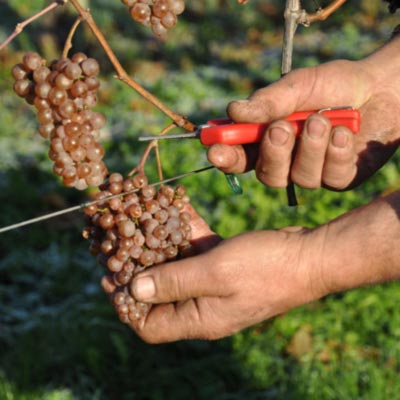Working with the vine
Conceiving the finest wine is only possible with the highest quality grapes. That is why the work done in the vineyard is of particular importance to us, and the focus of our attention. Our vineyard team tends to 45 hectares of vineyard, working hand in hand with all of our cooperators, and between us we share all the best practices. This close collaboration allows us to obtain a high quality grape, all the while respecting our environment.
Examples of some practices involved in cultivating our terroir include: tending to vineyard ground cover, vine training, high trellising, systematic stripping, green harvesting, and successive selections in harvesting.
The grapes are picked by hand only. Successive selections of the best bunches are made over time, leaving those with the best exposure to the sun on the vine, so that raisining is as effective as possible. Raisining, called passerillage in French, is a technique that allows the grapes to get rich in sugar concentration as the grapes are left on the vine longer. Juice volume will thus decrease, but sugar content will increase. This effect is not only due to sunlight, but also to the southerly wind called Foehn.







 Once selections at the harvest receiving dock have been made, the wine making process can begin :
Once selections at the harvest receiving dock have been made, the wine making process can begin :